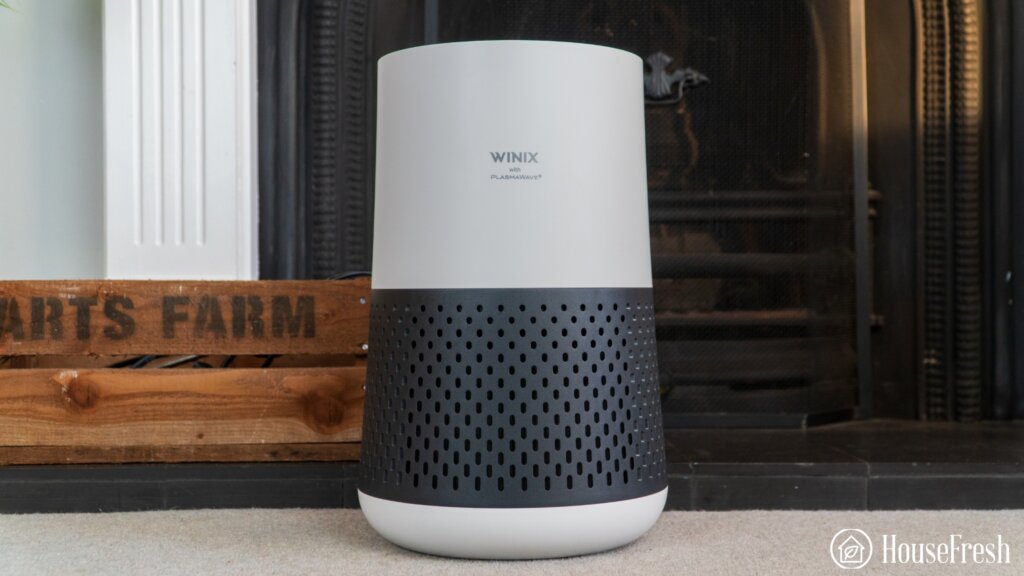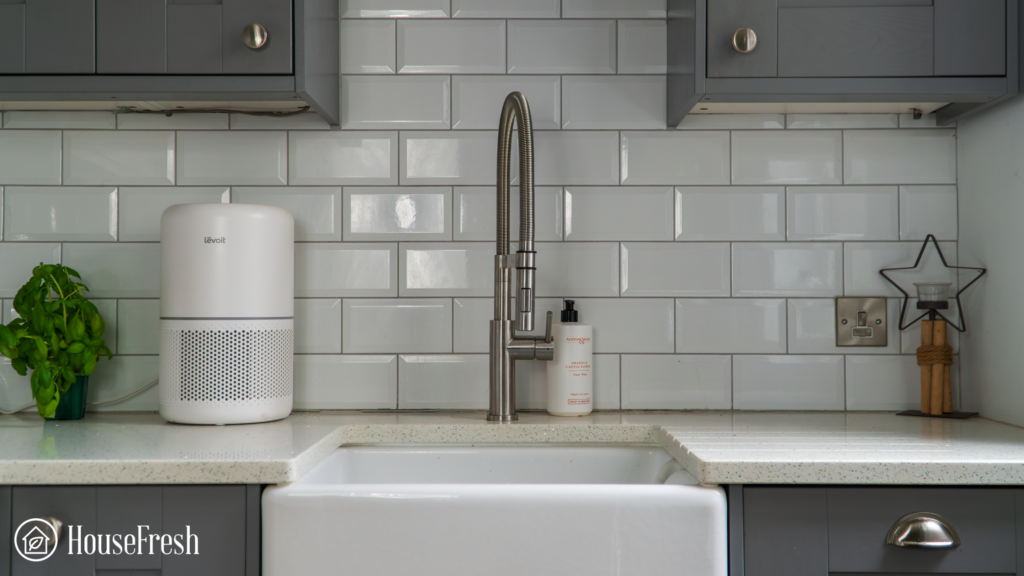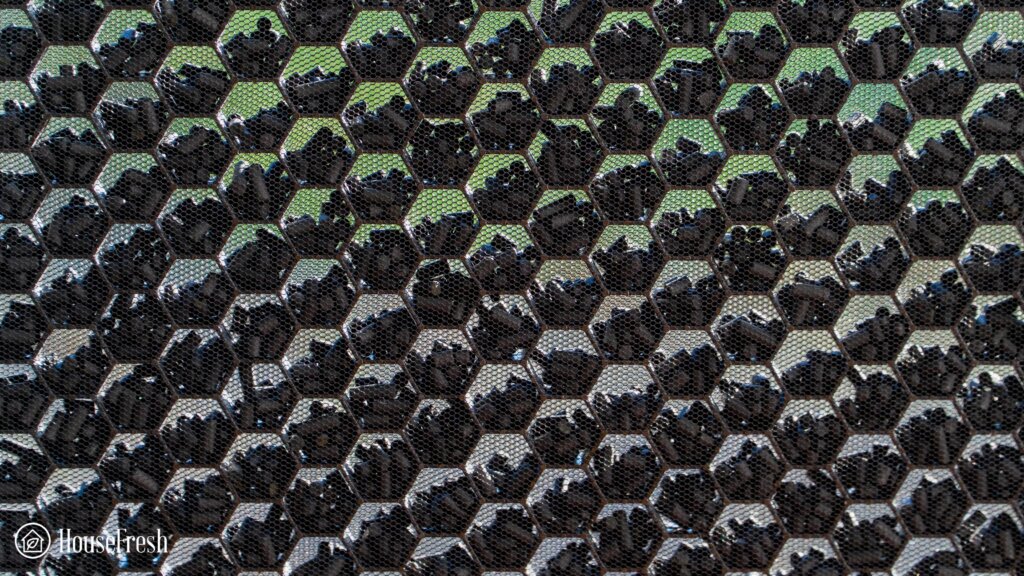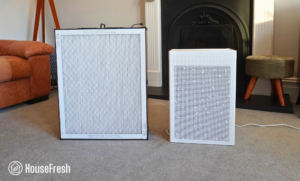Moving away from home can be an exciting experience, but living in close quarters with one or more roommates can be a daunting experience.
As you prepare to get your first taste of independent living, it makes sense to consider bringing an air purifier with you to fend off unwanted smells and protect your personal space from the dreaded freshman plague rife on campus, ready to strike against weary students.
The right air purifier will draw in air from your dorm and pass it through a series of filters that capture dust, pollen, smoke, odors and viruses. What’s left behind is clean, fresh air that will be redistributed into the space.
In this article, I shortlisted a handful of budget-friendly air purifiers that will not take up a lot of space but that are powerful enough to actually make a difference. We bought each device on this list with our own money so that we could run our usual battery of tests to assess their air cleaning performance, noise levels generated, energy consumption, yearly running costs and long-term user experience.
If you don’t have time to read my full article, check out the table below for a quick TL;DR of all the air purifiers I recommend for dorm rooms:
| SMALL DORMS | LARGE DORMS | SMART OPTION | TABLETOP OPTION | |
|---|---|---|---|---|
| Winix A231/A230 | AirFanta 3Pro | Levoit Vital 100S | CleanAirKits Triple Exhalaron | |
 |  |  |  | |
| Time to PM1 zero | 40 minutes | 17 minutes | 37 minutes | 46 minutes |
| CADR | 154 cfm | 430 cfm | 146 cfm | 128 cfm |
| Filter tech | True HEPA + carbon + ionizer | H11 HEPA + carbon | Bonded particle + carbon | HEPA H10 + carbon |
| Max room size | 231 sq. ft. | 671 sq. ft. | 219 sq. ft. | 192 sq. ft. |
| Yearly running costs | $119.54 | $125.23 | $81.98 | $110.88 |
| List price | $75.99 | $159.99 | $139.99 | $359.00 |
1. Best air purifier for small dorm rooms: Winix A231 (or A230)
Our top pick for dorm rooms no larger than 231 sq. ft. is a small air purifier with no smart features that you can find for less than $80.

Before I tell you more about this device, let me clarify that I’m writing here about the A231 because that is the model I tested: the white and grey device you can see in our photos. But if you prefer black, you can instead get the Winix A230, which is exactly the same as the A231 but in all black. Both devices have the exactly same internals, so it’s just a matter of taste. Right, with that info out of the way, let me tell you more about this unit.
If you are looking for a small air purifier you can have beside your bed or, on a narrow window sill or on top your desk, then the Winix A231 might be just what you want. With a CADR of 154 cfm, the Winix A231 can provide five air changes per hour in dorm rooms up to 231 sq. ft. thanks to a powerful fan and a high quality True HEPA filter packed with activated carbon. This combination allows the A231 to tackle both particles and gases, removing everything from dust to unwanted odors.
What we really like
What we think could be better
The Winix A231 comes with an inbuilt air quality sensor, so you get an auto-mode that will kick in autonomously as soon as the sensor detects pollutants in the air. This can come in handy if you want to set your air purifier and forget it. And, as with other Winix air purifiers, the A231 comes with PlasmaWave bipolar ionizer technology but you can disable it if you have concerns about ionization and ozone.



| HouseFresh rating: | ★★★★★ |
| Time to clean our 728 cubic feet test room (with the device running at top speed): | 40 minutes (with PlasmaWave) |
| Air purifier technology: | Fine mesh pre-filter, True HEPA filter, activated carbon filter, PlasmaWave technology |
| Recommended room size (4.8 air changes per hour): | 231 sq. ft. |
| Clean air delivery rate (CADR): | Dust: 154 CFM Smoke: 149 CFM Pollen: 147 CFM |
| Dimensions (in inches / in cm): | 9.5D x 9.5W x 14.6H inches (24.13D x 24.13W x 37H cm) |
| Weight (in pounds / in kg): | 7.1 lbs (3.2 kg) |
| Filter life: | 12 months |
| Noise level in decibels (measured from 3 ft. away with a sound level meter): | Speed 1: 35.2 dB Speed 2: 48.3 dB Speed 3: 57.9 dB |
| Electricity consumption in watts (recorded with an electricity usage monitor): | Standby mode: 0.06 watts Speed 1: 35.4 watts Speed 2: 37.7 watts Speed 3: 45.6 watts |
| Estimated running cost (electricity consumption + official filter replacement): | $119.54 per year |
| Cost per CADR cfm (based on dust CFM as reported by AHAM): | $0.51 |
| Manufacturer’s warranty: | 2 years |
| Country of manufacture: | South Korea |
2. Best for large rooms: AirFanta 3Pro
With a CADR of 430 cfm, the 3Pro can clean the air in larger dorm rooms (up to 671 sq. ft.) for just $175.99 if you go for the HEPA + carbon version.
Use the discount code HOUSEFRESH for 5% off when buying directly from AirFanta.
The AirFanta 3Pro is part of a new generation of air purifiers that are powered by PC fans, which make them a lot quieter and more energy efficient than traditional devices you will find at a retail store. The design of the 3Pro is inspired by a popular DIY air purifier you might have heard of called the Corsi-Rosenthal Box, with a base around which you get four filters that are topped with four PC fans which create the perfect cube.
The 3Pro is one of the most powerful air purifiers I have tested and it truly blew my mind in 2024, becoming one of our top recommendations. If you are looking for a relatively compact device (12.6 x inches, or 32 x 32 cm) that you can assemble yourself (and disassemble, when the time comes to go back home or move to a new place), then read on as the AirFanta 3Pro might be just what you’ve been looking for.
What we really like
What we think could be better
Traditional retail air purifiers come with a control panel at the top of the device with buttons or a screen for you to switch modes and fan speeds, but the AirFanta 3Pro doesn’t. Instead, you will get a 110-220v AC to 3-12v DC power adapter which will allow you to control the speed of the fans and the noise output.
We found that setting it to 6.54V is a sweet spot where the 3Pro offers excellent air cleaning while generating just 43dB, which is quieter than the recommended 45dB for classrooms — a good sound level to keep it running in the back without it disturbing your sleep or study time.



| Clean air delivery rate (CADR): | – Top speed PM1 CADR: 353 cfm – Sub-45 dBA PM1 CADR: 213 cfm |
| Filter technology: | True HEPA H11 and optional pelleted activated carbon |
| Recommended room size: | 529 sq. ft. (5 air changes per hour) |
| Dimensions: | 12.6D x 12.6W x 12.6H inches (32D x 32W X 32H cm) |
| Weight: | 7.7 lbs (3.49 kg) |
| Noise level in decibels from 3 ft. away: | 3.63 volts: 36.1 dB 4.19 volts: 36.9 dB 5.24 volts: 39.7 dB 6.54 volts: 43.3 dB 7.44 volts: 46.7 dB 8.56 volts: 49.1 dB 12.6 volts: 56.3 dB |
| Electricity consumption in watts : | 43.23 watts |
| Filter lifespan: | 6 – 12 months |
| Manufacturer’s warranty: | 1 year |
| Country of origin: | China |
| Country of manufacture: | China |
3. Best smart option: Levoit Vital 100S
The Vital 100s is a smart air purifier suitable for dorm rooms no larger than 219 sq. ft. with an on-board air quality sensor that connects to your smartphone for $139.99.
The Levoit Vital 100S has a dust CADR of 146, so this relatively small air purifier will be able to provide five air changes per hour in dorm rooms of up to 219 sq. ft. It comes with a removable pre-filter and a bonded main filter with a combination of activated carbon (to deal with odors and gases) and a HEPA-like particle filter (to filter out dust, pollen and other small particles).
If you are looking for a smart air purifier that you will be able to control and manage from your phone, then the Levoit Vital 100S is worthy of consideration. As with the Winix A231, the Vital 100S comes in an on-board air quality sensor that unlocks an auto-mode that will automatically adjust fan speeds based on the quality of your air. But it doesn’t stop there. You can also connect to your 100S from your smartphone through Levoit’s VeSync app, which is one of the most polished air purifier apps out there.
What we really like
What we think could be better
The Levoit Vital 100S is the upgraded, smarter version of the older Vital 100 and the little sibling of the popular Vital 200S. The Vital 100S cleared our small 728 cubic feet test room of all PM1 particles in 37 minutes — this is 11 minutes faster than the non-smart Vital 100 (48 minutes) and 17 minutes faster than the $99 Levoit Core 300 (54 minutes).



| HouseFresh rating: | ★★★★☆ |
| Time to clean our 728 cubic feet test room (with the device running at top speed): | 37 minutes |
| Air filtration technology: | Pre-filter and bonded particle + activated carbon filter. |
| Recommended room size (4.8 air changes per hour): | 219 sq. ft. |
| Clean air delivery rate (CADR): | Smoke: 134 cfm Dust: 146 cfm Pollen: 186 cfm |
| Dimensions (in inches / in cm): | 6.4 x 12.8 x 16.1 in (16.3D x 32.5W x 40.8H cm) |
| Weight (in pounds / in kg): | 7.28 lbs (3.3 kg) |
| Filter life: | 9 months |
| Noise level in decibels (measured from 3 ft. away with a sound level meter): | Speed 1: 37.5 dB Speed 2: 42.6 dB Speed 3: 48.7 dB Speed 4: 53.8 dB |
| Electricity consumption in watts (recorded with an electricity usage monitor): | Standby: 1.6 watts Sleep mode: 3.2 watts Speed 1: 5 watts Speed 2: 8.7 watts Speed 3: 15.4 watts Speed 4: 27.3 watts |
| Estimated running cost (electricity consumption + official filter replacement): | $81.98 per year |
| Cost per CADR cfm (based on dust CFM as reported by AHAM): | $0.96 |
| Manufacturer’s warranty: | 2 years |
| Country of manufacture: | China |
4. Best tabletop option: CleanAirKits Triple Exhalaron
Designed to be used as a table centerpiece, the Triple Exhalaron is a PC fan-powered air purifier with a CADR of 128 cfm that can be used in dorms no larger than 192 sq. ft.
The Triple Exhalaron is another PC fan-powered air purifier, this time manufactured by the team at CleanAirKits. The design of the Exhalaron is quite unique, with three cylindrical HEPA H10 filters (with activated carbon inside) that sit between a thin wooden base and a thick wooden top home to three CoolerMaster Mobius argb (2400 rpm) PC fans.
If you are looking for a small air purifier you can use in your dorm but also take with you to the library or bring to study groups, then look no further than the Triple Exhalaron from CleanAirKits as this is the only air purifier we have tested that has been designed from the ground up to be used as a table centerpiece ensuring it will reduce viral load.
What we really like
What we think could be better
It has a CADR of 128 cfm, so it will be able to give you five air changes per hour in dorm rooms no larger than 192 sq. ft. This air purifier is super quiet, hitting just 40.5 dB when running at its top fan speed, while still being able to clean the air faster than popular small devices like the Levoit Core 300.



| Clean air delivery rate (CADR): | – Top speed PM1 CADR: 128 cfm – Sub-45 dBA PM1 CADR: 128 cfm |
| Filter technology: | HEPA H11 with a layer of carbon-impregnated fabric |
| Recommended room size: | 192 sq. ft. (5 air changes per hour) |
| Dimensions: | 22W x 7.25D x 8.5H in (56W x 14D x 22 cm) |
| Weight: | 6 lbs (2.72 kg) |
| Noise level in decibels from 3 ft. away: | Speed 1: 35.2 dBA Speed 2: 37.7 dBA Speed 3: 40.5 dBA |
| Electricity consumption in watts: | Standby: 0.1 watts Speed 1: 1.1 watts Speed 2: 2.8 watts Speed 3: 6 watts |
| Filter lifespan: | 6 months |
| Manufacturer’s warranty: | 1 year |
| Country of origin: | United States |
| Country of manufacture: | United States |
Three other good air purifiers for dorm rooms you should consider
These devices didn’t make the final list but they are solid performers and might be a better fit for what you’re looking for.

Coway Airmega AP-1512HH Mighty
The Coway AP-1512HH is one of the most recommended air purifiers on the web, so you will probably have seen it if you’ve been doing your research for a while. This oldie but goodie will deliver five air changes per hour in dorm rooms of up to 360 sq. ft. thanks to its CADR of 240 cfm and its combination of a removable pre-filter, a True HEPA filter, a carbon impregnated filter and its bipolar ionizer (which you can disable if you prefer not to use). Filter replacement costs are some of the lowest we have seen.
The reason why I didn’t include it on this list is that in 2025, I think there are newer air purifiers that offer more value for a better upfront price. Plus, it is quite big and could be too bulky for small dorms. But if you like the look of it, or if you prefer to go with a device that has been on the market for over a decade, then the Coway Airmega AP-1512HH Mighty could be the best pick for you.

Smart Air S
This small(ish) air purifier has a CADR of 185 cfm, making it a good choice for dorm rooms no larger than 277 sq. ft. It comes with H13 medical-grade HEPA filters that will be able to remove not just dust and pollen particles from the air but also bacteria and viruses. If odors and chemicals are an issue, you can buy the optional activated carbon filter, too.
This is a great air purifier on paper but I didn’t include it as one of my main picks because it generates nearly 60 decibels of noise at top speed (58.2 dB), which is likely to be too loud for a dorm where people are going to be studying and need quiet to concentrate.
But if you are looking for an air purifier that looks like a piece of furniture and are not too bothered by smart functions or loud noises, then the Smart Air S could be just the thing.

Levoit Core 300S
The Levoit Core 300S is the upgrade to the older, $99 Core 300, now sporting smart features such as smartphone connectivity and app support. The Core 300S is also more energy-efficient and much faster (45 minutes) at cleaning the air compared to its older counterpart (54 minutes), which is impressive considering it costs just $50 more.
It has a CADR of 141 cfm so it can clean the air five times per hour in dorm rooms as large as 211 sq. ft., and comes with a bonded filter including a pre-filter mesh, a particle filter and a layer of activated carbon. I chose to go with the Vital 100S instead of the Core 300S because it offers a higher CADR (146 cfm) for a lower price ($139.99).
But if you prefer a cylindrical design and want an air purifier that you will be able to manage from your phone, then the Levoit Core 300S might be the best option for you and your dorm room.
Other units we tested but don’t recommend for dorm rooms
- Levoit Core Mini: In testing, this device took 1 hour and 53 minutes and had a CADR of 32 CFM, making it too small even for the smallest dorm rooms. You are better off saving up more and going for the bigger Core 200S or Core 300.
- Medify MA-25: While this is cheap, the filter replacement costs were much higher than similar-performing units.
- Blueair 411+ Auto: All Blueair air purifiers use a technology called HEPASilent, which uses an ionizer, but you can’t disable its use. The activated carbon used in these units is the fabric carbon, which we found far less effective than the pelleted carbon.
- PuroAir 240: This is an air purifier that you will often find at the top of Amazon as a sponsored option but that doesn’t offer a good enough value for your money, based on the results of our performance tests.
What to look for in an air purifier for a dorm room
Sadly, many dorm rooms in America are in older buildings with poor ventilation, which can mean levels of indoor pollutants can quickly rise and cause problems.
Indoor air pollutants can cause health problems and can even affect grades; a study from Israel showed that those students who breathed in the air with a higher count of fine particles scored on average 2.3% lower. The EPA stated that children in classrooms in highly ventilated spaces perform better on standardized tests than children in poorly ventilated rooms.
To get the most from college, you must create a space in your dorm room free of tiny particle pollutants that have been shown to create health problems and reduced cognitive ability.
You should try to ventilate the dorm room as much as possible, but when this isn’t possible, an air purifier can do a great job of keeping the air clean of these tiny harm-causing particles.
But to get the right air purifier for a dorm, you need to consider the following:
1. Consider the size of your dorm room
The average dorm room in the United States measures around 228 square feet for a dorm room with two students. The good news is that smaller spaces need smaller air purifiers to be effective. Most air purifiers are given a CADR score that is used to give you an indication of an air purifier’s cleaning power. Higher CADR will allow you to keep a large space clean.
An average double-person dorm room of 228 square feet with an 8ft ceiling will need a CADR score of 145 CFM to provide the 4.8 air changes per hour that the EPA recommends for portable air cleaners. This is exactly the CADR of our number 1 pick, the Levoit Core 300.
You can use our CFM calculator to find out what CADR you need to clean the air in your dorm room at least four times per hour:
2. Look for activated carbon filtration if you worry about odors
Particle filters like HEPA or MERV are great for removing the tiny particles from the air in a dorm room but won’t do anything about the odors that come with student living. An activated carbon filter can help to catch these odor gasses and keep the dorm room smelling better.
As a rule of thumb, you will want to choose an air purifier that uses pelleted carbon vs. the impregnated carbon fabric as we found that the latter will quickly lose effectiveness at removing odors.


3. Calculate long-term running costs
Most dorm rooms include free electricity usage. However, you will still need to replace the filters every six months for smaller air purifiers and potentially longer with larger devices.
We include the latest price for the genuine and generic filters for each recommended air purifier we review so you can know the accurate long-term running costs.

Be aware that running a large air purifier is often cheaper than you need as the filters are bigger and need replacing less often but often cost very similar.
4. Decide whether you need to get an air purifier with smart features
It feels like every appliance is smart nowadays, from your refrigerator to your television. It turns out that the same can be said for air purifiers.
The benefit of smart features is that they come with an onboard air quality sensor so that the air purifier will only kick in when it detects pollutants in the air. It is super useful for a kitchen but not mission-critical for a dorm room, so feel free to save money on a non-smart version.

But if budget is a concern, you can often find non-smart versions for cheaper prices. Sure, they won’t turn on and off automatically but you can simply keep the device running at a fan speed that you don’t find intrusive so it works all the time.
Why you should trust our recommendations
Unlike most guides to air purifiers you will come across on the internet, we actually put the air purifier we recommend through an in-depth testing process and share this data with our readers. We have reviewed over 90 air purifiers since 2020, and based on this original data, we have identified what we think are the best air purifiers suited for those living in dorm rooms.
We are 100% independent and don’t take review units in exchange for review; we pay retail like everyone else. This means we are free to say when an air purifier fails to deliver, and we don’t have any outside pressure to push certain brands or models.
If you still can’t find the right air purifier for your dorm room or just want to ask me more about our performance testing, please reach out to me directly danny@housefresh.com






